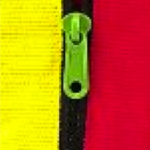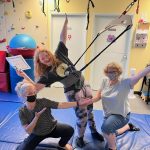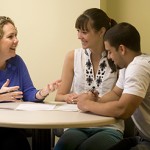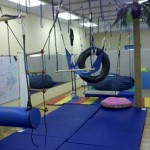Since there is not an overall medical diagnostic code for SPD, what codes can be used to identify components of SPD?
We suggest that physicians consider the following ICD 10 codes:
a. For general sensory processing concerns that result in behavioral problems, G98.8 Unspecified Neurological Disorder/ Other disorder of the nervous system / not otherwise specified (NOS). Particularly important when it is desirous to avoid using a psychiatric diagnosis.
b. For severe touch hypersensitivity: R20.3 Hyperesthesia (abnormal skin over-sensitivity), R20.1 Hypoesthesia (reduced sense of touch), R20.2 Paresthesia ( abnormal sensation – prickly, itching, etc)
c. For severe hypersensitivity to smells or tastes: R43.1 Smell Sensory Disturbance, R43.2 Taste Sensory Disturbance
d. For dyspraxia or bilateral integration disorder: R27.9 Unspecific Lack of Coordination, R27.8 Other Lack of Coordination, R27.0 Ataxia Unspecific Lack of Coordination
e. For visual perceptual dysfunction: H53.10 Visual Disturbance (Subjective), e.g. for visual perceptual dysfunction.
Sensory Processing Disorder (SPD) also known as Sensory Integration Dysfunction (SID) was originally recognized in the mid 1900’s by Dr. Jean Ayres who was an American Occupational Therapist, educational psychologist and neuroscientist. To date there are over 50 researchers who have been funded worldwide to research SPD by the Wallace Research Foundation (WRF). Empirical Evidence Related to Therapies for Sensory Processing Impairments. In an article from the American Journal Of Pediatrics it states that “Occupational therapy with the use of sensory-based therapies may be acceptable as one of the components of a comprehensive treatment plan”. Significant recent studies that were left out of the article and are discussed in Dr. Lucy Miller’s Letter to the editor of the American Journal of Pediatrics published June 12. 2012 (scroll to the bottom of the link to see her letter). The article, Fidelity in Sensory Integration Research, was published in 2007. It describes and defines the complex therapeutic process and was developed to increase the validity of sensory integration outcome studies.
According to the Sensory Processing Disorder Foundation, SPD occurs in 1 in 20 children. There are as many as 40% of children diagnosed with ADHD who have SPD, as well as over 90% of children with Autism Spectrum Disorders (ASD) who have it. The new DSM V now includes hypo and hyper sensitivities in the ASD diagnostic criteria. Currently there is not a set of diagnostic codes (ICD-10) that separately encompass the family of sensory processing disorders. However, most of the individual components of SPD can be identified within the ICD-10 (see above ICD- 10 codes). One of the main reasons SPD is not a separate medical diagnosis is due to the fact that it is co-morbid (occuring along side with other disorders such as ADHD and Autism). It is important to note that it also occurs by itself and it is these children that are often falling through the cracks thought to just have behavioral problems or ADHD.
An Evaluation by an Occupational Therapist trained in SPD can identify if there are physical reasons for your patient’s problems. The most common scenario we see in our clinic are children who have very poor attention and are constantly on the move because they are not getting the information from their bodies (muscles and joints) about where their body is in space unless they are moving with intensity. Also, they do not have the core strength to be still. It is always surprising to parents because they are usually good at running, jumping, and climbing, yet when their core strength is tested they can barely get their bodies up off the ground (i.e. Prone extension/ superman position or supine flexion/ sustained crunch position). It is actually much more difficult to be still than moving. Here is an example we often explain to parents: “To help you understand why your child moves so much imagine the feeling after your face is numb from the dentist, which causes you to tap your face and attempt to move your face in different directions to feel the connection of the numb area. Many kids who are constantly on the move are doing so in order to feel the connection to their bodies”. Once they are able to feel connected to their bodies we see a quick change where they are able to pay attention to the world outside of their bodies (increased eye contact, engagement and attention to others). When this happens parents feel like it is a miracle or like magic, but all we have done is to help the child feel connected to their body and feel more secure in the world by providing the sensory input that was needed. We then always focus on teaching the functional skills that they are lacking in (i.e. fine motor, gross motor, strengthening muscles, self care and play/social skills). Every session is highly individualized to meet the child’s needs.





